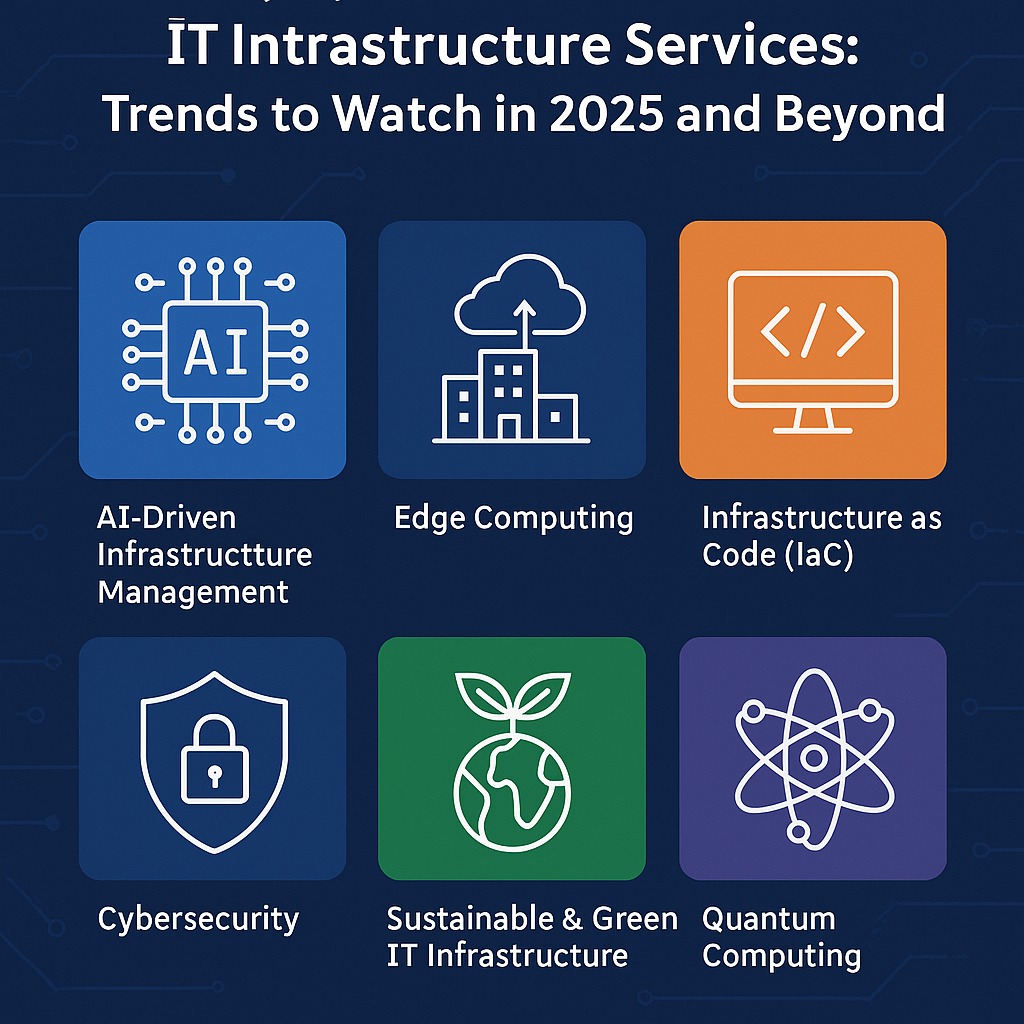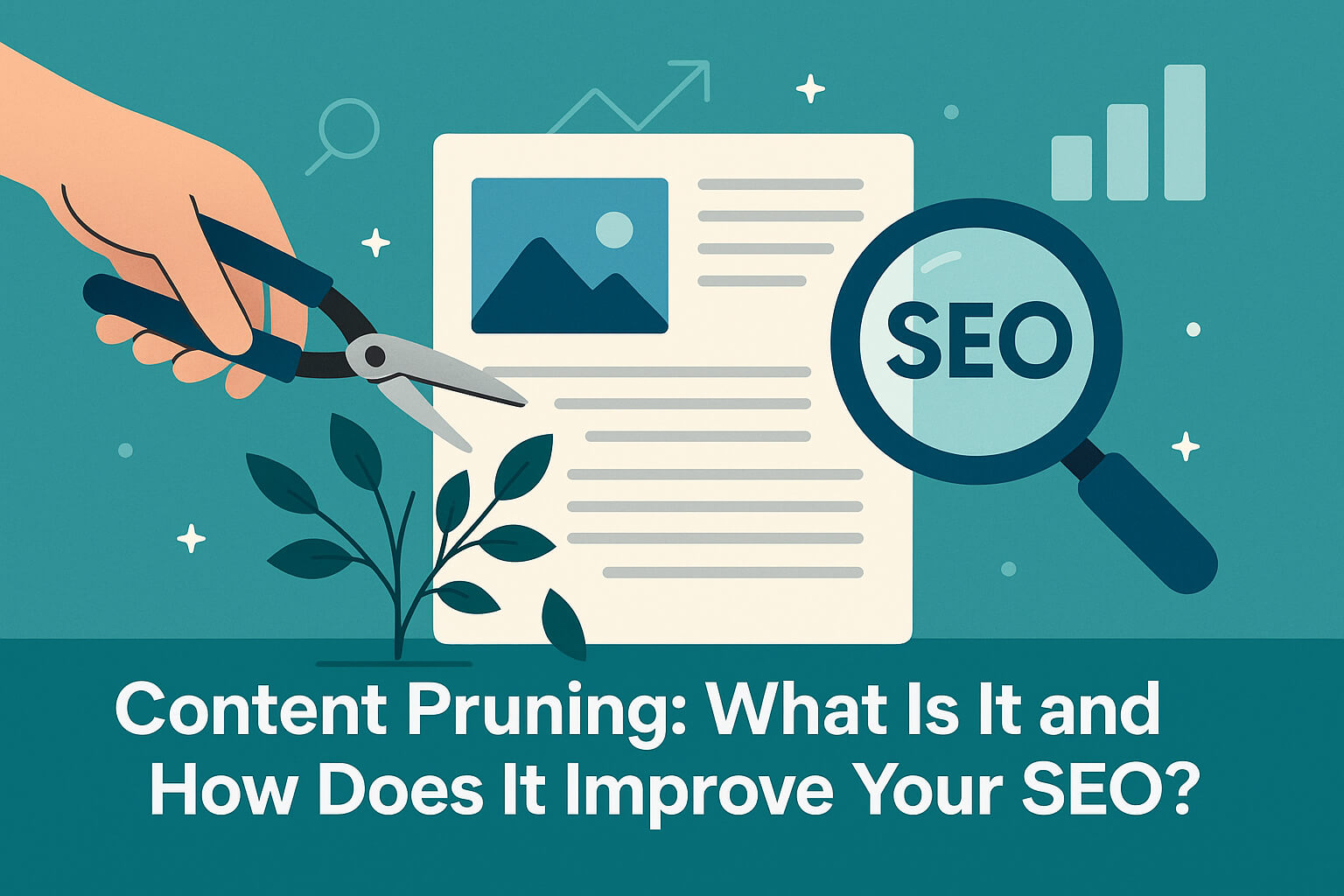The Future of IT Infrastructure Services: Trends to Watch in 2025 and Beyond

The IT world is in the midst of a monumental transformation. As businesses become more digital, cloud-native, and data-driven, the way organizations approach IT infrastructure is evolving rapidly. The traditional model—centered around static, on-premise data centers—is giving way to agile, scalable, and intelligent environments. And this change is just getting started.
In 2025 and beyond, IT infrastructure services will continue to play a pivotal role in powering innovation, enhancing operational efficiency, and enabling digital transformation across industries. Whether it’s through smarter automation, more robust security frameworks, or new computing paradigms, the future holds exciting possibilities.
Let’s explore the key trends that will shape the future of IT infrastructure services—and how businesses can prepare for what’s coming next.
1. AI-Driven Infrastructure Management
Artificial Intelligence (AI) is moving beyond chatbots and recommendation engines. In the world of IT infrastructure, AI is transforming how organizations monitor, manage, and optimize their environments.
In 2025, we’ll see widespread adoption of AI-powered infrastructure solutions that can:
- Predict outages before they happen
- Optimize resource allocation dynamically
- Perform automated root cause analysis
- Recommend performance improvements
This shift will reduce downtime, improve system reliability, and free up IT teams to focus on strategic tasks. AI will no longer be a “nice-to-have”—it will be essential for infrastructure efficiency and resilience.
2. Edge Computing Becomes Mainstream
As more devices connect to the internet and generate data in real time, the need for faster processing closer to the source has given rise to edge computing.
Edge computing enables data processing to occur at or near the point of origin—such as sensors, mobile devices, or smart equipment—rather than routing everything through centralized data centers or the cloud.
By 2025, edge computing will become integral to IT infrastructure in industries like:
- Manufacturing (IoT sensors, robotics)
- Healthcare (remote monitoring, diagnostics)
- Retail (smart shelves, autonomous checkouts)
- Transportation (connected vehicles, traffic systems)
Organizations will need hybrid infrastructure models that combine cloud, edge, and on-premise resources to deliver seamless user experiences and real-time insights.
3. Infrastructure as Code (IaC) Will Dominate
Manual provisioning and configuration of infrastructure are quickly becoming outdated. In the future, infrastructure will be written and managed like software through code.
Infrastructure as Code (IaC) allows businesses to define their entire infrastructure setup in scripts or configuration files. Tools like Terraform, Ansible, and Pulumi are already making this possible.
The advantages are clear:
- Faster deployments
- Greater consistency across environments
- Easier rollback and version control
- Reduced human error
By 2025, adopting IaC will be a best practice for DevOps and cloud-native teams aiming for speed, agility, and scalability.
4. Cybersecurity as a Core Infrastructure Layer
With cyberattacks growing in scale and sophistication, security is no longer just a network issue—it must be embedded into every layer of the infrastructure stack.
Expect to see:
- Zero Trust security models becoming standard
- AI-powered threat detection and response systems
- Multi-factor and biometric authentication as defaults
- Infrastructure segmentation to isolate breaches
As businesses collect more sensitive data and operate in hybrid environments, the need for infrastructure that’s “secure by design” will only intensify.
5. Sustainable & Green IT Infrastructure
Environmental sustainability is no longer optional. Governments, investors, and consumers are all demanding that businesses reduce their carbon footprints—including in IT.
In 2025, expect IT infrastructure services to prioritize:
- Energy-efficient data centers
- Renewable power sources
- Server virtualization to reduce hardware usage
- Heat recovery and cooling innovations
- Carbon footprint monitoring tools
Green infrastructure will not only help the planet, but it will also reduce operational costs and attract eco-conscious customers.
6. Cloud-Native Everything
We’re past the stage where businesses are deciding “whether” to move to the cloud. Now, the question is how fast and how deeply.
Cloud-native technologies—containers, Kubernetes, serverless computing—are redefining how applications are developed and deployed. As of 2025, cloud-native infrastructure will support nearly every aspect of IT operations.
Benefits include:
- On-demand scalability
- Greater fault tolerance
- Shorter development cycles
- Faster disaster recovery
Even traditional enterprises will increasingly shift toward container-based architectures and multi-cloud environments to remain competitive.
7. Composable Infrastructure
Composable infrastructure is an emerging approach that treats compute, storage, and network resources as services. These services can be dynamically assembled and reassembled based on application needs.
Think of it like building with LEGO blocks—you can reconfigure your infrastructure on the fly depending on business requirements.
By 2025, composable infrastructure will gain traction in industries with fluctuating workloads, such as e-commerce, media, and financial services. It offers greater flexibility, faster deployments, and more efficient resource use.
8. Unified Observability Platforms
As infrastructure environments become more distributed and complex, monitoring tools must evolve. Basic log and metric tracking isn’t enough. IT teams need full-stack visibility.
The future is unified observability—a single platform that integrates:
- Logs
- Metrics
- Traces
- User experience data
- Infrastructure health
These tools (e.g., Datadog, Splunk, New Relic) use AI and analytics to correlate events and provide actionable insights across systems, clouds, and devices.
Unified observability will be critical for maintaining performance and availability in 24/7 digital operations.
9. Quantum Computing: The Next Frontier
While still in early stages, quantum computing could redefine the future of IT infrastructure in the long term.
By 2025, enterprises may not be running quantum systems in production, but partnerships and pilot programs will be growing. Companies will start to build infrastructure compatible with hybrid quantum-classical models.
Potential applications include:
- Advanced cryptography
- Molecular modeling for pharma
- Real-time logistics optimization
- Financial market simulations
Preparing for quantum readiness will become part of forward-thinking infrastructure strategies.
10. Localized & Specialized IT Infrastructure Services
As global tech trends accelerate, regional IT ecosystems are rising to meet local business needs. Specialized service providers are tailoring solutions to suit cultural, regulatory, and operational requirements.
For instance, companies offering IT Infrastructure Services In Ahmedabad are helping small and mid-sized enterprises in India adopt cloud computing, automation, and cybersecurity solutions without the overhead of global providers. They offer tailored packages, local support, and scalable infrastructure aligned with regional growth.
This kind of localization ensures that innovation isn’t just a big enterprise advantage—it becomes accessible to businesses of all sizes.
Preparing for the Future: Key Recommendations
- Audit your current infrastructure regularly. Identify gaps in scalability, security, and performance.
- Adopt a hybrid mindset. Combine cloud, edge, and on-premise resources for flexibility.
- Train your teams. Upskill in AI, automation, cloud-native tools, and cybersecurity.
- Invest in automation and orchestration. Manual operations won’t keep up with modern demands.
- Choose strategic IT partners. Look for providers who understand your industry, region, and goals.
Final Thoughts
The future of IT infrastructure services is intelligent, adaptive, and deeply integrated with business strategy. From AI to edge computing, from green initiatives to quantum potential—the next wave of infrastructure innovation is already here.
Organizations that stay ahead of these trends will gain the agility, security, and efficiency needed to thrive in a rapidly changing world. The time to modernize is now—because the infrastructure of the future won’t wait.




